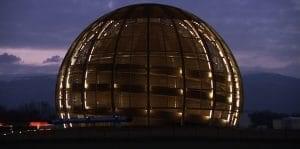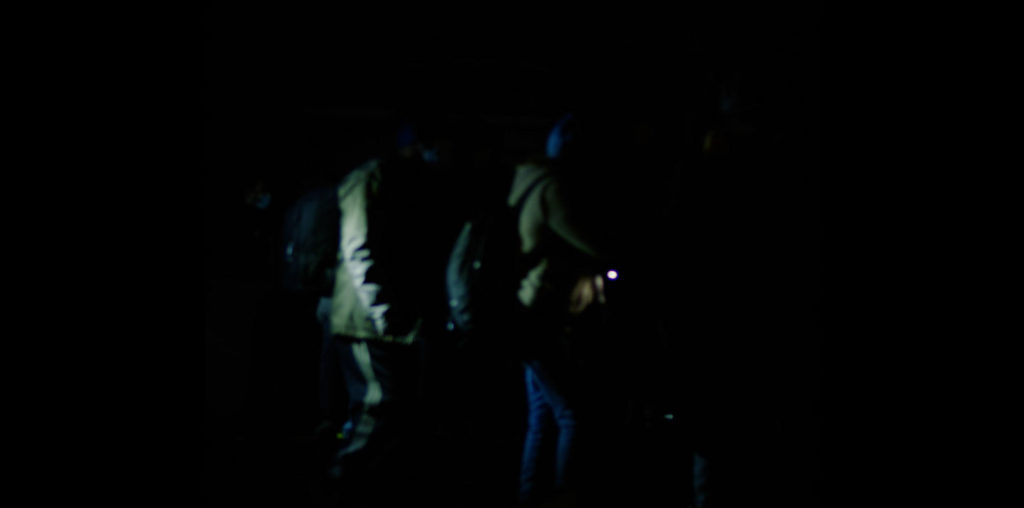
It’s tough to make a film about anything that the eye cannot see. And it’s even harder to shoot a documentary that explains abstract theories about the molecules that make up the universe.
But Particle Fever manages to overcome those obstacles as it chronicles scientists’ efforts to find the Higgs boson, sometimes called the “God particle,” whose existence had only been theorized. The Higgs boson is thought to be one of the building blocks of the matter that makes up our universe — the glue that holds everything together.
For anyone who watches the news, there’s no suspense over the outcome of the project that began in 2008 and came to fruition in 2012. Ground zero for research is the Large Hadron Collider, a massive structure dedicated to particle research that took a couple of decades to build.
While there’s a lot of discussion about scientific theory and logistics, which never bogs down the film’s pace, the most gripping parts are the disappointments, setbacks and near-disasters researchers endured in their quest. The first disappointment for U.S. scientists came about when they tried to get the project started. There’s no practical military or commercial applications for research, so no one in Washington wanted to foot the bill. That point is driven home in the film when an economist tries to pin down the scientists, asking, “What do we get out of this research?”

“…chronicles scientists’ efforts to find the Higgs boson, sometimes called the ‘God particle’…”
Physicist David Kaplan replies with astonishing candor, “I have no idea,” adding, “The science has to exist in a place where we don’t ask what’s the economic gain and instead ask, what do we not know and where can we make progress.”
That was a hard pill for Washington to swallow, which explains why the Hadron Collider was built in Switzerland instead of the United States.
Kaplan discloses to an audience of researchers that when called on the justify the project he takes one of two tacts, “What we tell people, and then there’s the truth.”
He gives the doubters a more concrete definition of the project, telling them they’re “creating conditions as they existed directly after the Big Bang.” But a truer reading of their ambitions is more nebulous: “We’re trying to understand the basic nature of matter.”
From the start, researchers realized that this endeavor would either be a tremendous success or a terrible failure. As one scientist explains, in particle research you do work based on a theory you had 20 years ago, and you may not be able to test another theory for another 20 years.
The project was truly an international effort that included physicists from nations that are mortal enemies, including Pakistan and India, Georgia and Russia, Israel and Iran, yet they worked together in harmony on the project. It’s apparent that the excitement of reaching a truly spectacular finding is what united them. Or, as one scientist put it, “Once you have curiosity you can’t control it.” The researchers’ excitement over the project comes through in the film and their passion is contagious.

“…just bring along a healthy sense of curiosity and prepare to have your mind expanded.”
Part of the excitement, undoubtedly, was simply in getting the collider built. It’s reputed to be the world’s largest and most powerful particle accelerator, consisting of a 27-kilometer ring of superconducting magnets with a number of accelerating structures to boost the energy of the particles along the way. Particles are routed in opposite directions around the ring structure and collide, causing them to smash apart into subatomic elements of matter.
Physicists hoped to find results that would change the way we perceive the universe. They theorized that the elements that comprise matter may not be the only pieces to the puzzle. Other building blocks that are not part of our universe may indeed exist, and their experiments are part of an effort to uncover those mysterious elements.
Not everyone in the scientific community was sold on the research — some considered the experiments risky business. As with the development of the atom bomb during World War II, skeptics weren’t sure that the experiments wouldn’t create an Armageddon. They speculated that the collision of particles might create a black hole that could swallow up the earth.
Apart from the fears of total annihilation, theories put forth in Particle Fever are truly mind-blowing, including speculation about parallel universes versus a super-symmetrical universe. Could our universe be just a pocket within a much larger space where different laws of physics apply depending on what region of space you happen to inhabit?
Depending on the experiments’ outcome, researchers would either gain great insight into these questions or see their assumptions about the physical world is thrown into total chaos. I’ll spare you any spoilers about that.
Considering the complexities of the subject matter, the film holds together surprisingly well. It’s catnip for physics geeks, of course, but others with even a mild curiosity about the physical world can appreciate it. Fortunately, the film is not burdened by technical jargon, and helpful graphics illustrate some of the trickier points, so there’s no need to dust off your high school science texts before seeing it. Just bring along a healthy sense of curiosity and prepare to have your mind expanded.

Particle Fever (2013) Directed by Mark Levinson, starring David Kaplan, Fabiola Gianotti, and Sherwood Boehlert.
8 out of 10


Particle Fever is the most magnificent, thrilling, spine-chilling, etc. etc. science film (perhaps film of any type!) I have ever seen!!!